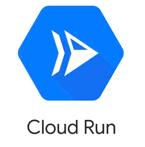Let’s get a quick overview of Google Cloud Functions & Google Cloud Run from an GCP certification perspective. We will look at important certification questions regarding Cloud Functions and Cloud Run
You will learn
- What is Cloud Functions & Cloud Run?
- Why it is important and how to set it up?
- Commands Cheatsheet
Google Cloud Functions
Cloud Functions
![]()
- Imagine you want to execute some code when an event happens?
- A file is uploaded in Cloud Storage
- An error log is written to Cloud Logging
- A message arrives to Cloud Pub/Sub
- Enter Cloud Functions
- Serverless compute service offered by GCP
- Run code in response to events
- Write your business logic in Node.js, Python, Go, Java, .NET, and Ruby
- Don’t worry about servers or scaling or availability (only worry about your code)
- Pay only for what you use
- Number of invocations
- Compute Time of the invocations
- Amount of memory and CPU provisioned
- Time Bound - Default 1 min and MAX 9 minutes(540 seconds)
- Each execution runs in a separate instance
- No direct sharing between invocations
AppEngine vs Cloud Functions
- Both are Serverless compute services
- App Engine is best suited for
- An application consists of multiple services/components
- Like Web UI, Rest API’s, Business Logic Services
- These components together make up an Application
- Helps to treat such applications as single unit
- Cloud Functions is best suited for
- An action to happen based on some events in GCP
- These actions are individual actions and should be managed independent
- Cloud Functions allows to decouple events handling
Cloud Functions - Concepts
![]()
- Event : Upload object to cloud storage
- Trigger: Respond to event with a Function call
- Trigger - Which function to trigger when an event happens?
- Functions - Take event data and perform action?
- Events are triggered from
- Cloud Storage
- Cloud Pub/Sub
- HTTP POST/GET/DELETE/PUT/OPTIONS
- Firebase
- Cloud Firestore
- Stack driver logging
Example Cloud Function - HTTP - Node.js
const escapeHtml = require('escape-html');
/**
* HTTP Cloud Function.
*
* @param {Object} req Cloud Function request context.
* More info: https://expressjs.com/en/api.html#req
* @param {Object} res Cloud Function response context.
* More info: https://expressjs.com/en/api.html#res
*/
exports.helloHttp = (req, res) => {
res.send(`Hello ${escapeHtml(req.query.name || req.body.name || 'World')}!`);
};
Example Cloud Function - Pub/Sub - Node.js
/**
* Background Cloud Function to be triggered by Pub/Sub.
* This function is exported by index.js, and executed when
* the trigger topic receives a message.
*
* @param {object} message The Pub/Sub message.
* @param {object} context The event metadata.
*/
exports.helloPubSub = (message, context) => {
const name = message.data
? Buffer.from(message.data, 'base64').toString()
: 'World';
console.log(`Hello, ${name}!`);
};
Cloud Functions - From the Command Line
| Description | Command |
|---|---|
| Deploy a new Cloud Funtion | *gcloud functions deploy FUNCTION_NAME –runtime python37 –trigger-resource TRIGGER_RESOURCE –trigger-event TRIGGER_EVENT |
| List available events | gcloud functions event-types list |
| Call a function | gcloud functions call FUNCTION_NAME –data=’{“message”:”test”}’ |
| Delete a function in a given region | gcloud functions delete FUNCTION_NAME –region=REGION |
Cloud Functions - Remember
![]()
- No Server Management: You dont need to worry about scaling or availability of your function
- Cloud Functions automatically spin up and back down in response to events
- They scale horizontally!
- Cloud Functions are recommended for responding to events:
- Cloud Functions are NOT ideal for long running processes
- Time Bound - Default 1 min and MAX 9 minutes(540 seconds)
- Cloud Functions are NOT ideal for long running processes
Cloud Run & Cloud Run for Anthos

- Cloud Run - “Container to Production in Seconds”
- Built on top of an open standard - Knative
- Fully managed serverless platform for containerized applications
- ZERO infrastructure management
- Pay-per-use (For used CPU, Memory, Requests and Networking)
- Fully integrated end-to-end developer experience:
- No limitations in languages, binaries and dependencies
- Easily portable because of container based architecture
- Cloud Code, Cloud Build, Cloud Monitoring & Cloud Logging Integrations
- Anthos - Run Kubernetes clusters anywhere
- Cloud, Multi Cloud and On-Premise
- Cloud Run for Anthos: Deploy your workloads to Anthos clusters running on-premises or on Google Cloud
- Leverage your existing Kubernetes investment to quickly run serverless workloads
Cloud Run - From the Command Line
| Description | Command |
|---|---|
| Deploy a new container | gcloud run deploy SERVICE_NAME –image IMAGE_URL –revision-suffix v1 First deployment creates a service and first revision Next deployments for the same service create new revisions |
| List available revisions | gcloud run revisions list |
| Adjust traffic assignments | gcloud run services update-traffic myservice –to-revisions=v2=10,v1=90 |